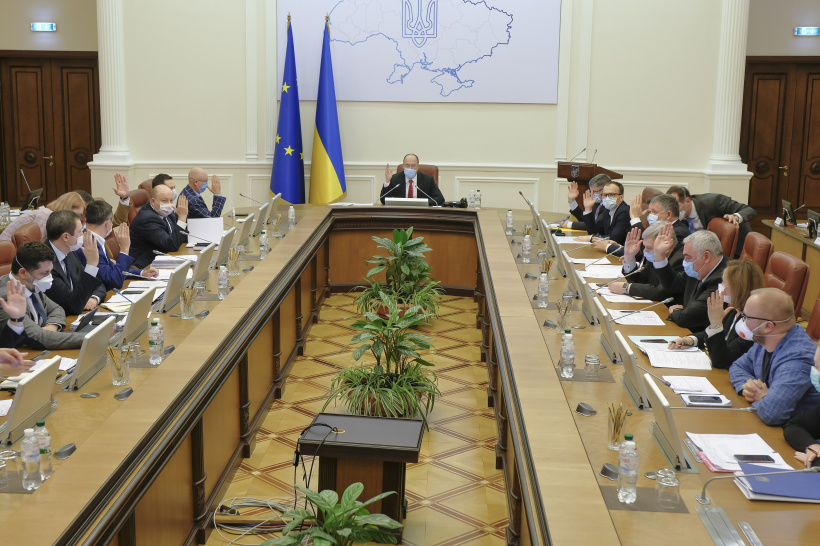So far both Crimea and the so-called Donetsk and Luhansk “people’s republics” (“DNR” and “LNR”) have been isolated from the outside world even more than before. The actual extent of the coronavirus spread there remains unknown. This is due to the lack of testing in the occupied Donbas with Russia’s additional reasoning to hide the real situation in Crimea.

The Donbas situation
Starting from 16 March, Ukraine limited passage via its entry-exit checkpoints from the temporarily occupied parts of Donetsk and Luhansk oblasts in order to prevent the spreading of infection. Only persons who are registered in the territories controlled by the Ukrainian government are allowed to enter from the occupied territories. And those registered in the uncontrolled territories are permitted to leave free Ukraine in order to enter Russia-occupied areas.
The Ukrainian 24 Kanal, referring to the State Border Service, informed that the passenger flow across the contact line decreased significantly these days. Previously, the daily passenger traffic through the Donbas checkpoints amounted to 40-50 thousand people, yet on 17 March it stood only at about 4,500 people.
Now, Russia has also suspended the passage from the ORDLO (“the certain areas of Donetsk and Luhansk oblasts” – the official designation of the occupied areas) to its territory. The restriction has been officially imposed only on the holders of the so-called “LNR” and “DNR” passports. However, social media users reported the cases of Russian border guards denying entry to Russia for the holders of Russian passports, whose registration address is outside Russia.
Also, the occupation authorities of Donetsk announced the closure of what they consider their border starting from 21 March.
Meanwhile, Ukraine’s Commissioner for Human Rights Liudmila Denysova informed that last week, around 600 residents of the Donbas sought medical care for the acute respiratory infection symptoms, 91 people with suspected pneumonia. The Commissioner added that COVID-19 tests are not available in the occupied territory, that’s why the local doctors can’t diagnose the coronavirus cases.
Denysova called on the international humanitarian organizations having access to the occupied territories to address the situation by providing the population with the COVID-19 tests, medicines, means of personal protection, and to run an awareness campaign to stop the spreading of coronavirus in the occupied zone.
Mykhailo Besarab, one of the coordinators of the Capitulation Resistance Movement in Ukraine, sees the coronavirus situation in the occupied Donbas as an additional challenge for president Volodymyr Zelenskyy. In particular, he expresses concerns that the president may decide to bring those patients from the occupied Donbas to the territories controlled by the Ukrainian government. Besarab poses the questions that should be answered before such a decision might be made:
- Do Ukrainian soldiers on the front-line have enough protection?
- Are all the Ukrainian citizens in all the far corners of the country and those living near the frontline can count on the authorities to get medical treatment?
- Does Ukraine have enough equipment to beat the virus and to overcome the economic consequences of the epidemic?
Mr. Besarab also supports the call on international organizations to ensure the necessary assistance for the population of the occupied territories because Russia violates its duty as an occupying power. Ukraine, in turn, is going to ensure unimpeded transit of the equipment, doctors, and medication supplies to the ORDLO.
Meanwhile, even in the present situation, Russian-led forces continue their day-to-day military hostilities in the Donbas. For example, on 19 March they violated the ceasefire 15 times, one Ukrainian soldier was injured.
The situation in Crimea
Starting from 18 March, the Russian border service closed entry for the “foreign citizens” to the territory of Crimea from mainland Ukraine.
According to the occupation authorities of Crimea, as of 20 March, 212 people were under medical supervision and 16 more people were quarantined.
Referring to Russia’s Federal Service for Supervision of Consumer Rights Protection and Human Well-Being, Krym.Realii reports that no coronavirus cases were recorded in Crimea, however, ordinary residents can’t be diagnosed on the peninsula, because only certain categories of people, arriving from other countries are being tested.
Also previously, Russian activist Vladimir Garanchuk stated that the government was hiding the true dimension of the coronavirus spread in Crimea, and in neighboring Russia as well. He believes that this is due to the upcoming voting regarding the amendments to the country’s constitution.
Eugeniya Goryunova, Crimean political expert working in Kyiv, told the media that the number of hospitals was reduced as a result of the healthcare “optimization” on the peninsula in 2014.
“When the virus will be finally detected in Crimea, I am absolutely sure that they will state that it originates from mainland Ukraine, not from Russia. Thus, it was the right decision to close the administrative border. Like in any authoritarian state, the information will be withheld until the last moment.”
The Permanent Mission of Ukraine to the UN place the responsibility to ensure sufficient hygiene measures and medical care to the residents of Crimea as an occupying power.
According to Our World in Data, from the beginning of the pandemic, only 316 COVID-19 tests were done in Ukraine as of 20 March. The lack of testing may be the reason why Ukraine is among the countries least affected by the coronavirus outbreak. The real picture in Ukraine can be less optimistic.
Read also:
- The pro-Russian network behind coronavirus riots in a small Ukrainian town
- The Kremlin and its disinformation about coronavirus: when confusion is the message
- Quarantine parliament: Ukrainians rally against using coronavirus situation to rush treasonous laws
- Breaking: Ukraine sees first coronavirus death, closes entry for foreigners, suspends international air travel
- Disinformation mash-up: MH17, coronavirus, Russophobia, Ukraine
- Nostradamus and coronavirus: How Russian propagandists use names of seers to push own narratives
- Parliament’s urgent quarantine agenda: MPs appoint new Prosecutor General
- Ukrainian MFA publishes border crossing & consular assistance rules vis-a-vis COVID-19
- Russian propaganda’s “conspiratorial” virus: disinformation review








